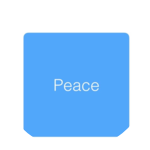About This Project
I think we have the technology to develop an artificial intelligence model that can differentiate between Dinoflagellates by simply examining their images. I will generate a database of 64 Dinoflagellate species, with 2000 images of each species. These images will feed an artificial neural network to train it to classify each species. My aim is to develop an image database of Dinoflagellate species, as well as a trained neural network that classifies them with greater than 99% accuracy.
Ask the Scientists
Join The DiscussionWhat is the context of this research?
Dinoflagellates are photosynthesizing organisms with 2,294 species. They are important to our environment because most living organisms rely heavily on them.
Machine learning is part of the larger artificial intelligence field. The field is rapidly growing and one of its most useful structures is the artificial neural network. However, machine learning requires large data to produce a useful neural network.
I hypothesize that by creating a data set of 64 Dinoflagellate species each with 2,000 images, I can feed this data set to an artificial neural network to produce a Dinoflagellate image classifier with above 99% accuracy. I will train our neural network then test it by showing it images of Dinoflagellates and checking to see if the AI correctly identifies the species.
What is the significance of this project?
If I successfully produce a neural network that can correctly identify Dinoflagellates from an image this solution could save time and money by replacing the traditional method of sending live or stained samples to specific database vendors where humans identify the species. A new modern tool can automate this task by not only giving scientists, like marine and environmental biologists, the ability to identify Dinoflagellates from samples by simply taking a microscope photo, but also identify different species in a mixed sample and count the different species.
Additionally, this proof of concept that a neural network is capable of classifying organism with minimal visual information can be expanded to automate other types of labor intensive cell identification in the lab and the field.
What are the goals of the project?
The ultimate goal of this project is to develop a database of images of 64 different Dinoflagellate species (2000 images per species) then feed this database into an artificial neural network to train it.
The hypothesis is, using this database I can develop an artificial neural network that classifies Dinoflagellates by species, and if given an image with mixed cells it would still identify each species with 99% accuracy.
To test it, I will run the database on an object detection neural network which will train on a training set (usually 75% of the images divided randomly). The training outcome is then tested on a testing set (usually 25% of the images), and this gives us the accuracy of the training (how much of the images are correctly classified).
Budget
The digital microscope will be the main instrument for imaging the cells, I chose this particular microscope because it is highly rated, comes with a good digital camera, has reliable software, is easy to use, and is affordable. I have already purchased this instrument from my personal finances.
I will be purchasing the Dinoflagellates as permanent slides from This vendor to ensure pure colonies and reproducibility for the database generation. Each permanent slide costs $15 and only one permanent slide per species will be sufficient to get enough images for the database.
The neural network that will be used already exists as an open source free script and I have modified it to work with this project and accept this particular microscope's images.
This neural network does not work on a normal computer's CPU, they need a GPU, thus a GPU server is required and this will be rented from PaperSpace.
Endorsed by
 Project Timeline
Project Timeline
The project starts by purchasing the central instrument for the work, a digital compound bright field light microscope. Once the microscope is purchased the rest of the project is easier, several bench marking tests will be performed to standardize the image database generation, then the actual database will be developed and an artificial neural network trained on it. Finally, the work will be published for everyone to use and a system for database growth will be setup.
Nov 01, 2018
Purchase microscope
Nov 05, 2018
Bench mark image resolution and image segmentation script
Dec 01, 2018
Project Launched
Dec 15, 2018
Train neural network to differentiate images with cells from images without cells
Dec 31, 2018
Purchase each Dinoflagellate permanent slides and develop image database
Meet the Team
Affiliates
Sari Sabban
I completed my PhD in molecular biology and biotechnology from The University of Sheffield in the UK and I am now an assistant professor at King Abdulaziz University in Jeddah, Saudi Arabia and a part-time lecturer at Effat University. At a turning point in my life I took the plunge and decided to shift my entire research from the wet lab (cell and chemicals) to the dry lab (computers) and entered the field of computational biology (why I did that is a VERY long story) but now I am glad I went through that shift. So now my research interests are in machine learning and computational biology. I am also passionate about public science communication which is why I go out of my way every week to podcast about science as well as stream my work in order to get more people interested in science, hopefully becoming the scientists of the next generation.
Additional Information
The project is already on GitHub and can be monitored for progress, and of course the scripts are free and open source for everyone to use. If this project gets funded I will be live streaming my research on Twitch as well as uploading the results in this page. I welcome people to communicate with me about this project and I would like to answer all your questions.
Project Backers
- 15Backers
- 102%Funded
- $1,417Total Donations
- $94.47Average Donation

